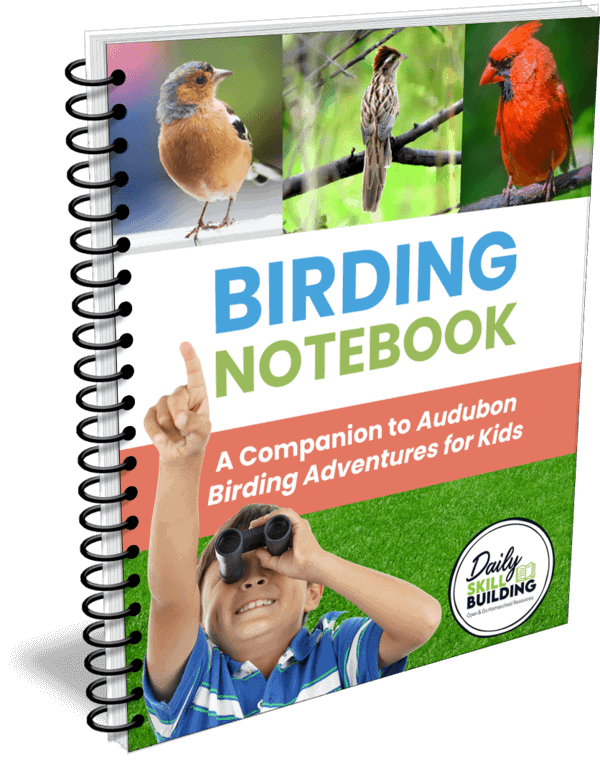FREE Identifying Animal Tracks Unit Study
Published:
April 21, 2021

Contributor:
Carrie
Disclosure: This post may contain affiliate links, meaning if you decide to make a purchase via my links, I may earn a commission at no additional cost to you. See my disclosure for more info.
Springtime is the perfect time for an animal tracks unity study. Most animals have started coming out of hibernation and ready for their regularly scheduled spring program.
From brown bears and beavers to squirrels and deer, our FREE Identifying Animal Tracks Unit Study will help teach your kids about a few animals and their tracks.
Animals Tracks Unit Study
If you are like many homeschoolers, studying science through nature study is something that is looked forward to by children who enjoy being outdoors.
You don’t need anything special for this unit study, as you’ll find lots of information and links to videos and books all conveniently noted below. Simply bookmark this page so you can come back to it at your convenience. And don’t forget the free nature printable pack at the end.
How to Teach About Animal Tracks
First and foremost, you’ll want a good resource to help your kids learn about what an animal’s tracks look like. Just like our finger and handprints, animals also have their own unique stamp.
The bigger the animal, the bigger the print. Each animal’s hand and foot makeup usually play a major role in how they walk, run, and hunt.
Start by choosing one animal to study at a time. In the Identifying Animal Tracks pack you’ll find a chart and matching cards for the following animals:
- Brown bear
- Beaver
- Eagle
- Raccoon
- Squirrel
- Deer
For each animal, go through the following steps.
Step 1: Show the animal track card and matching animal card.
Explain that what they’re seeing is that animal’s unique footprint. Talk about what it looks like, any unique shapes it makes, and the claws.
Step 2: Use a notebooking page to enhance the study.
The Identifying Animal Tracks pack comes with a notebooking page for each animal. The prompts on the page encourage your child to try and draw and the animal’s track themselves.
They’ll also be prompted to find further information about the animal track, such as:
- The common size of the track.
- Where the track can be found.
- The normal pace gait.
There’s also space for finding a few interesting facts about the animal. Encourage your child to find facts that help support them learning about the animal’s track.
Step 3: Pair the resource with a video and/or book.
Videos and books always help solidify concepts being taught and it can provide another avenue to help your child learn. It’s also a good way to meet the needs of different learning styles.
If you’re homeschooling multiple ages and grades, incorporating these resources also helps you teach your children simultaneously.
Animal Tracks Videos
No need to go on a hunt for good animal track videos. I’ve rounded up a few good ones that can easily be paired with the Identifying Animal Tracks resource.
- Animal Track Detective
- Animals Tracks for Kids (Virtual Hike)
- Animal Tracks 101
- How to Identify a Brown Bear Track
- Beaver Animal Tracks
- Wild Animal Tracks
- Animal Tracks Identification Guide
Animal Tracks Books
The books below will make a great addition to your home library long after you’ve done an animal tracks unit study. They can be used for much more!
- Life-Sized Animal Tracks
- Tracks, Scats, and Signs (take along guide)
- Whose Track Is That?
- Tracks: An Animal Tracking Book for Kids
- The Fascinating Animal Books for Kids
Animal Tracks Activities
In the event you want to add some hands-on animal tracks activities, consider these:
More animal science printables:
Checkout these posts for free printables to use during your animal science studies.
- Resources and Worksheets About Animal Migration
- Animal Behavior Terminology Copywork
- Animal Families Notebook Research Journal
- Unit Studies for Animal Science
- Animal Kingdom and Classification Printables
- Animal Classification Cut & Paste
- Animal Classification Color by Code
- Worksheets to Help Kids Explore the Animal Kingdom
- Animal Classification Fact Cards and Cheat Sheets
- Animal and Plant Cell Notebooking Journal
Study Animals by Habitat
Check out these free resources to study animals by habitat.
- Animals of the Tide Pool Printables
- Animals of the Grasslands Printables
- Animals of the Forest Printables
- Animals of Fresh Water Marshes Printables
- Animals of the Rain Forest
- Animals of the Tundra Printables
- Animals of the Taiga Printables
Final Thoughts
Learning about animal tracks can be a great addition to your homeschool lessons. Use the ideas above and snag the free Identifying Animal Tracks resource below.
You might also be interested in these homeschool nature study resources:
 |
 |
 |
 |
To get access to this free unit study, sign into the subscriber library using the password found in all our emails. Not yet a subscriber? No worries – sign up below to get access now!
[magicactionbox]









